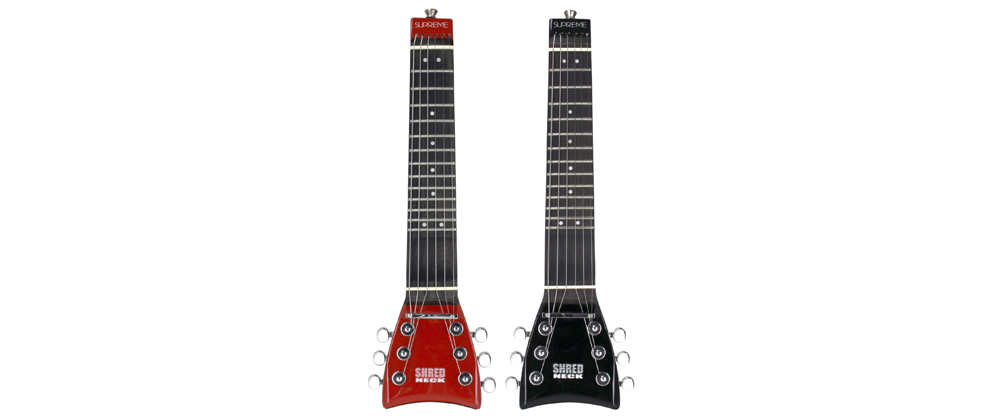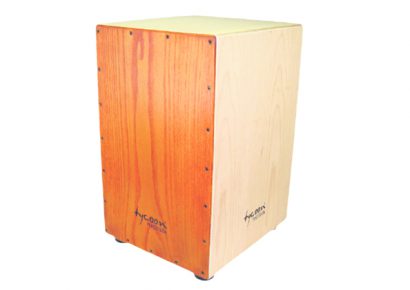ONE OF THOSE FINGER EXERCIZE THINGIES
You’ve seen these, right? Various brands make them: little handheld contraptions with four spring-loaded buttons that you press to keep your fingers in fighting shape when you’re away from the guitar. Many of them even have raised ridges to simulate strings so that you can maintain your calluses. I’ve had one of these for years and I find it especially helpful when I know I’ll be playing a lot of acoustic soon and I need to build up my finger strength. Some of my guitars have very light gauge strings and I usually play with a very light touch (although I do have a few with 10-52 in standard tuning which I wallop), and if I’ve been playing those for too long the heavier strings of an acoustic can be an instant finger killer.
ONE OF THOSE MINI NECK THINGIES
Shredneck comes to mind: this is a simulated guitar neck complete with strings and a span of around seven frets for practicing your scales and licks when you can’t have a full guitar with you. Shredneck makes all sorts of models including 6-string, 7-string, acoustic, classical 4- and 5-string bass, and even a ’12-24 fret’ version which gives you a whole octave’s worth of frets to noodle about with. I don’t actually own one of these (yet) but I’ve tried them out and they seem like a really great practical solution to when you need to practice quietly. It’s not designed to be a sound generating device (and pretty much forget about actually tuning it) but it’s great for getting those digits moving and practicing your scale patterns. There’s space for you to pick so you can maintain your left and right hand coordination too.
ANY SURFACE WILL DO
When I was in high school I read a lesson with Eddie Van Halen in Guitar World where he demonstrated the tapping figure from the song “Judgement Day,” which requires the index and middle fingers of each hand tapping a specific sequence which moves up the neck. At first it felt really unnatural, but I was obsessed with this bloody solo so I tapped that pattern on every freaking surface I could find. My desk, the counter at the tuckshop, a ruler and before long I was able to play that solo. Now, many years later, that pattern is still burned into my muscle memory. I’m sure it gets annoying to the people around me when I’m sitting there impatiently drumming my fingers in 64th notes.
GUITAR PRO
There have been times when I’ve been able to sit at the computer but not able to sit behind a guitar, so in those cases I’ve composed riffs and melodies in Guitar Pro notation software or even by drawing in the MIDI edit window on my recording software. Each approach brings something different. Guitar Pro lets me use my ‘guitarist brain’ to write riffs that fall within the same visual patterns I use to find my way around the fretboard, and it’s relatively easy to write things that sound like me. The MIDI edit window lets me write things that are based purely on the musical intervals, freeing me from the trap of being ‘too guitaristic.’ Either way, when I do finally get a guitar in my hands I have a whole vocabulary of new riffs and licks to try, some of which are in the style of what I would normally write and some of which are things I never would have thought of if I was thinking in terms of frets or specifically guitar-driven melodies. Some of them can be a bit finger-twisty when it’s time to actually transfer them to guitar, which also makes them good as exercises.
VISUALISING
Sometimes I’ll just picture what I’d be playing on guitar if I had one with me, whether I’m stuck in traffic, going for a jog, standing in line at the supermarket or tuning out while someone really boring is talking to me. We all do that, right?

